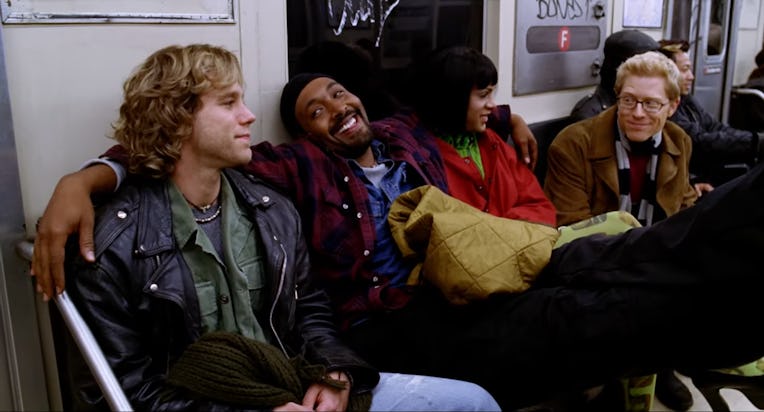It was 2006 or 2007 when I saw Rent for the first time. I was in middle school, and my mother was channel surfing looking for something we could watch. She stopped upon Chris Columbus’s film adaptation of the 1996 Brodway hit, which was on HBO at the time, saying something to the effect of, “Oh, you’ll probably like this, they’re a bunch of artists in New York.” We tuned in halfway through, and when Collins sang “I Will Cover You (Reprise)” at Angel’s funeral, I sobbed my eyes out.
This is because Rent, specifically the film adaptation, is for children. The plot is basically that six hot people with problems manage to get through it all using the powers of love and friendship. That is also the basic plot of any Degrassi episode. I quickly became obsessed with both the movie and the musical and spent hours at a time on forums for “Rentheads.” I played the soundtrack out loud from my family’s desktop computer, which unfortunately for them was located right next to the kitchen. If you wanted a snack, you were going to hear “Take Me or Leave Me,” those were the rules.
The lore of Rent is as such: Jonathan Larson spent years composing the rock opera, loosely based on Giacomo Puccini’s La Bohème, about HIV, drug use, sex, love, death, gender fluidity, queerness, performance art, gentrification, selling out, getting paid to kill someone’s dog, and not paying your bills. He then died tragically young of a brain aneurysm the day after final dress rehearsal. (Incidentally, he was also, contrary to what some viewers might assume, straight and not HIV-positive, and he maybe plagiarized some of the characters from Sarah Schulman’s 1990 novel People in Trouble.) The show went on to be a smash hit, playing on Broadway for over a decade and being turned into the movie that we are discussing today.
The musical itself is a flawed text. However, the songs are catchy, and when you cast people who look like they might actually be in their early twenties, it can sort of hang together. The movie, on the other hand, is a full-on disaster that can only be appreciated by tweens who have never had anything remotely bad happen to them.
Let us first discuss the casting. Columbus opted to cast six out of the eight original cast members, all of whom had been age appropriate when the show premiered on stage a decade earlier. I believe that this can only go unnoticed to a child’s eye, one that thinks their 16-year-old babysitter is an adult. Adam Pascal was 35 when he played Roger, the musician who finds love with the canonically 19-year-old stripper Mimi, played in the movie by Rosario Dawson. As a pre-teen I saw nothing wrong with this, and found their story to be one of love persevering. Re-watching it, Roger becomes a mopey pervert approaching middle-age and refusing to get a job.
Columbus’s Rent, with its heavy-handed depiction of a mélange of relevant-to-1996 social issues, works less as a film and more as a Sesame Street episode for Adult Problems. Watching it as a child taught me, vaguely (and one could argue poorly) about HIV, lesbians, trans people, and heroin. It also taught me about new concepts like leather, dildos, curry vindaloo, huevos rancheros, and Maya Angelou.
With this week’s release of Netflix’s Tick, Tick… Boom!, the film adaptation of Larson’s autobiographical musical, I’m sure we will once again be relitigating the merits (or lack thereof) of the Rent movie. The short answer is that for us as adults, there are none. It’s a complete misfire of a movie musical that is too long, too overwrought, and missing the spark of what makes it an exciting show to watch performed live.
But the precocious children in your life will love it. Its sole purpose should be to be shown to the little freaks who have already decided that they want to live in New York when they grow up. Rent is for them, and we should let them have it.
